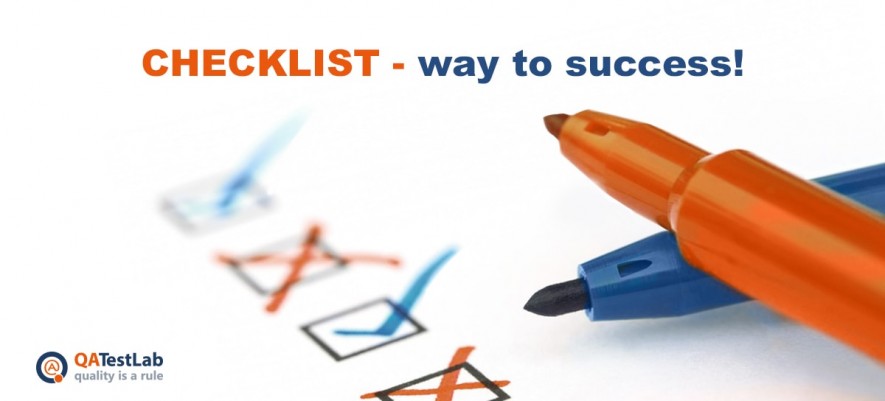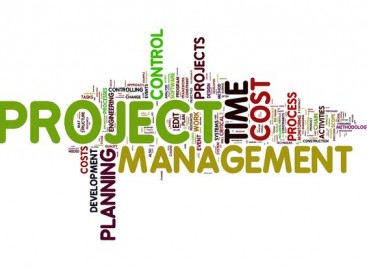- QATestLab Blog >
- QA Basics >
- Software Testing Checklist – 5 Steps to Success
Software Testing Checklist – 5 Steps to Success

Note: this article was updated in April 2019.
Nowadays, any ordinary actions, important events or the entire working year are easy to control with a proper checklist. Numerous procedures that require control are common for business. To manage them and not to forget anything, it is effective to use a checklist. In the case of software testing, it is not just a catalog of points to check, it is a detailed plan of a specific standard. This article discloses the main points in favor of using the checklist in the software testing and gives tips on how to reach its maximum effectiveness.
The Checklist in Software Testing
QA specialists prefer to use a checklist during testing because this tool can be applied in the quality assurance process just by writing down point by point to monitor the process. You can easily define the amount of to-do work by marking the quality management procedures as fully or partially completed. However, to reach a desirable quality it is necessary to compose your checklist not as a simple catalog of items and tasks. It has to pursue specific goals of testing and steps to achieve them. Reasons to have a checklist:
- it is easy to create/use/maintain;
- analyzing results (task progress/completion status) becomes clearer;
- it can be used for further similar projects to accelerate their completion;
- flexible – you can add or remove items according to the project aim
A project checklist is a universal tool, which can be applied in future projects with the same methodology. However, its effectiveness depends on the approach and product specifics. Read the QATestLab life hacks on the effective checklist creation.
5 criteria to preserve in the software testing checklist
Basic requirements for a checklist usually are quite common and easy to understand. But what are the peculiarities of checklist for software testing? Have a look at the points require attention and what you should not miss.
Define the right time to prepare a checklist. The checklist composing should be initiated on the product development stage. It is preferred to involve QA engineers before the coding begins. As soon as the product specifications are identified, it is reasonable to prepare the checklist. Otherwise, you risk wasting resources and time on reworking the existing modules or releasing a product that does not meet the customer’s expectations. You also risk not to meet the expected result, if you create the checklist basing on a ready software, but not on its specifications.
Learn the product specifications. Testing should start with the maximal provision of general information about the purpose of the product, its features and the target audience of users. It is important to have training, which allows to identify important issues and to suggest their possible solutions. This will form the structure of future checklist and priorities of the quality control.
Prepare a test plan. You have to know what items to cover in your checklist. You may spend an entire testing process to examine an app and still won’t be able to guaranty that the product is ready for deployment. You have to make a fixed set of tests to check the entire program. List the exact procedures and their amount in proper order to move step by step. Include the maximum of tasks in one test and try not to multiply the procedures. Only with the help of a checklist you’ll be able to see the percentage of app functionality that works properly. Form the exact list of QA specialists and divide the duties according to the skill-set of everyone. Define who will be responsible for performing each certain and display the activity in the testing checklist.
Prepare testing schedule. Define strict time frames for every item on the checklist. To meet the deadlines, it is important to outline the most wide-scaled tasks. Identify the points which must be under attention to save time on testing. Clarification of the priorities will help to form the schedule and organize time-management in the most effective way. Watch the clock and prevent the breaching of time frames to save the reputation on the market.
Display results. Include the points, which show the final results of the executed test. This step is a true purpose of the entire checklist, but it should not be limited only to that. This part will indicate the tasks, which are already marked in the checklist as executed. Here you detect if the final aim is achieved.
The true purpose of a checklist for software testing
A checklist is a universal tool for project management and QA engineers, which can be applied in future projects with the same methodology. However, its effectiveness depends on the approach and consideration of the mentioned criteria in quality assurance. Use QATestLab best practices of checklist composing. Pay attention to your checklist, and it will pay a great benefit to the success of your project.
Learn more from QATestLab
Related Posts:
- Limitations and Difficulties of the Checklists
- How Healthy Is Your Testing Process? A Full Checklist
- Does Your Project Need a Test Plan?







I simply couldn’t agree more! Last year, we got in touch with The Digital Group for software testing consulting services to help us take steps to achieve our testing goals, and the pointers in the checklist are definitely in lines with what they told us. Thanks again…
We appreciate such a detailed feedback. Hope you will find lots of useful information on our blog
Useful! Also check out this 75 pointer cheat sheet on testing key aspects of a gaming application here -> http://www.softcrylic.com/blogs/game-testing-checklist-comprehensive-75-pointer-cheat-sheet-game-testers/
Thanks!